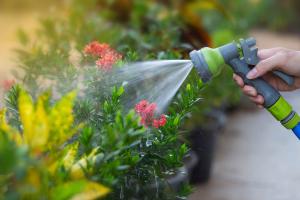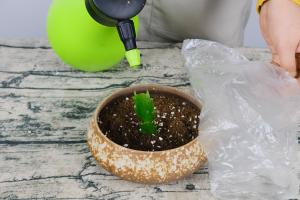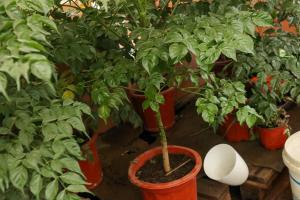What is Eating Tomato Plant Leaves?
Tomato plants are a popular choice for gardeners due to their delicious fruit and relative ease of cultivation. However, these plants are often susceptible to a variety of pests that can damage their leaves, compromising the health and yield of the plant. In this article, we will explore some common culprits that may be eating your tomato plant leaves.
Aphids
Aphids are a common pest that can be found on many types of plants, including tomato plants. They are small, pear-shaped insects that feed on the sap of the plant, causing the leaves to wilt and turn yellow. The damage caused by aphids can weaken the plant and reduce its productivity. If you suspect aphids are the problem, try using insecticidal soap or neem oil to get rid of them.
Tomato Hornworms
Tomato hornworms are large caterpillars that can be up to 4 inches long. They have distinctive markings and are often found on the underside of tomato plant leaves. These caterpillars can eat through leaves quickly and can cause significant damage to the plant. If you notice these pests, try picking them off by hand or using Bt insecticide to get rid of them.
Whiteflies
Whiteflies are tiny, winged insects that feed on the sap of tomato plants. They can be found on the undersides of leaves and can cause a sticky substance called honeydew to form on the leaves. This substance can attract ants and lead to the growth of sooty mold, which can further damage the plant. If you suspect whiteflies are the problem, try using insecticidal soap or an insecticide specifically designed for whiteflies.
Tobacco Budworms
Tobacco budworms are small caterpillars that can be found feeding on the leaves of tomato plants. They can be difficult to detect, as they often blend in with the plant foliage. If you suspect tobacco budworms are the problem, look for small holes in the leaves and droppings on the ground near the plant. Try using Bt insecticide or neem oil to get rid of them.
Spider Mites
Spider mites are tiny, spider-like insects that can be found on the undersides of tomato plant leaves. They feed on the sap of the plant and can cause the leaves to turn yellow and fall off. If you suspect spider mites are the problem, try using insecticidal soap or neem oil to get rid of them.
In conclusion, there are a variety of pests that may be eating your tomato plant leaves. By identifying the culprit, you can take steps to mitigate the damage and ensure a healthy, productive plant. It is important to regularly inspect your plants for signs of pests and take action promptly if you notice any issues. With proper care and attention, your tomato plants can thrive and provide you with delicious, homegrown tomatoes.

 how many times do yo...
how many times do yo... how many planted tre...
how many planted tre... how many pine trees ...
how many pine trees ... how many pecan trees...
how many pecan trees... how many plants comp...
how many plants comp... how many plants can ...
how many plants can ... how many plants and ...
how many plants and ... how many pepper plan...
how many pepper plan...
































